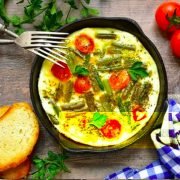Binge-watching before bedtime…

Are you guilty of it?
Since the introduction of streaming companies, such as Netflix and Stan, the era of scheduled programming has seemingly come to an end. Everyone can watch the content they like when they like. This unprecedented access has introduced a new viewing style: Binge Watching. Binge watching is defined as
“watching multiple consecutive episodes of the same television show in one sitting on a screen, be it a television, laptop, computer or tablet.”
Prior research has indicated that media bingeing was associated with more anxiety, depression, and fatigue. Binge viewers also reported higher levels of loneliness and depression. In more recent studies, conducted by the Journal of Clinical Sleep Medicine, it was reported that binge-watchers had more fatigue, insomnia symptoms, poorer sleep quality, and feeling more alert before going to sleep. Those who binge-watch before bed had 98% more chance of having poor-quality sleep than those who didn’t.
Looking at bright screens, especially at night, can wreak havoc on your biology, because it is one of the cues that helps maintain our circadian rhythm or body clock. When it gets dark, our bodies start to prepare for sleep, but bright lights can trick our brains into thinking it’s still daytime and it reduces our ability to secrete melatonin, which makes it not only harder to fall asleep, but also reduces the amount of sleep you get once you do fall asleep.
While we don’t expect you to stop watching shows, there is a way to help combat the binge-watching addiction. Dr Robert Oexman, a member of the American Academy of Sleep Medicine, says the best way to do it is on the weekend, and earlier in the day instead of the late evenings. Ideally, binge-watching should occur before 6 pm, and if that’s not possible, you should at least stop watching shows an hour before you start getting ready for bed.
For more tips and information on how to help improve your quality of sleep, check out our Ritualize app!
References:
http://jcsm.aasm.org/viewabstract.aspx?pid=31062
https://www.businessinsider.com.au/tv-binge-watching-can-damage-your-health-2017-9



 There are fixed, heritable genes (such as skin and eye colour) and there are genes that can be influenced daily according to our lifestyle. These genes are continually directing the production of proteins that control how your body functions at every second of the day. Genes turn on or off (sometimes at a rapid rate) only in response to signals they receive from the surrounding environment – signals that you provide based on the food you eat, the exercise you do (or don’t do!), your quality of sleep, sun exposure and so on. Genes are like light switches that turn on and off and influence every element of body function. So, you are in the driver’s seat to take control of your genes expression. Here are some tips for you:
There are fixed, heritable genes (such as skin and eye colour) and there are genes that can be influenced daily according to our lifestyle. These genes are continually directing the production of proteins that control how your body functions at every second of the day. Genes turn on or off (sometimes at a rapid rate) only in response to signals they receive from the surrounding environment – signals that you provide based on the food you eat, the exercise you do (or don’t do!), your quality of sleep, sun exposure and so on. Genes are like light switches that turn on and off and influence every element of body function. So, you are in the driver’s seat to take control of your genes expression. Here are some tips for you:
 With a multi-million dollar weight loss and fitness industry, plus thousands of apps you’d think it’d be easy for us to stick with a diet and exercise program. It all starts with the best of intention, but then momentum starts slowing down and motivation dwindles until you’re left with another weight loss ‘’ notch on your belt.
With a multi-million dollar weight loss and fitness industry, plus thousands of apps you’d think it’d be easy for us to stick with a diet and exercise program. It all starts with the best of intention, but then momentum starts slowing down and motivation dwindles until you’re left with another weight loss ‘’ notch on your belt.
 Sleep plays a vital role in good health and well-being throughout your life. Getting enough quality sleep at the right times can help protect your mental health, physical health, quality of life, and safety.
Sleep plays a vital role in good health and well-being throughout your life. Getting enough quality sleep at the right times can help protect your mental health, physical health, quality of life, and safety.




 Basil evokes aroma’s of fresh Italian dishes and can be eaten cooked or raw. Not only is it delicious, it’s also incredibly healthy. Read about the health benefits of basil here and enjoy this simple pesto recipe.
Basil evokes aroma’s of fresh Italian dishes and can be eaten cooked or raw. Not only is it delicious, it’s also incredibly healthy. Read about the health benefits of basil here and enjoy this simple pesto recipe.
 We are often not aware that our mind can be trained to think positively, and positive affirmations are a great tool for re-training your own thought processes. Research is showing that positive affirmations do in fact rewire the brain.
We are often not aware that our mind can be trained to think positively, and positive affirmations are a great tool for re-training your own thought processes. Research is showing that positive affirmations do in fact rewire the brain.

 Including loads of vegetables in your diet is so important for your health. Vegetables are incredibly rich in nutrients and antioxidants, which boost your health and help fight off disease. Additionally, they are good for weight control as they have a low-calorie content. Getting the required several serves of vegetables can be hard for some people.Some simply don’t like them while others are unsure how to prepare them so they taste good.Here are some unique ways you can incorporate vegetables into your diet so that you never get sick of eating them.
Including loads of vegetables in your diet is so important for your health. Vegetables are incredibly rich in nutrients and antioxidants, which boost your health and help fight off disease. Additionally, they are good for weight control as they have a low-calorie content. Getting the required several serves of vegetables can be hard for some people.Some simply don’t like them while others are unsure how to prepare them so they taste good.Here are some unique ways you can incorporate vegetables into your diet so that you never get sick of eating them.